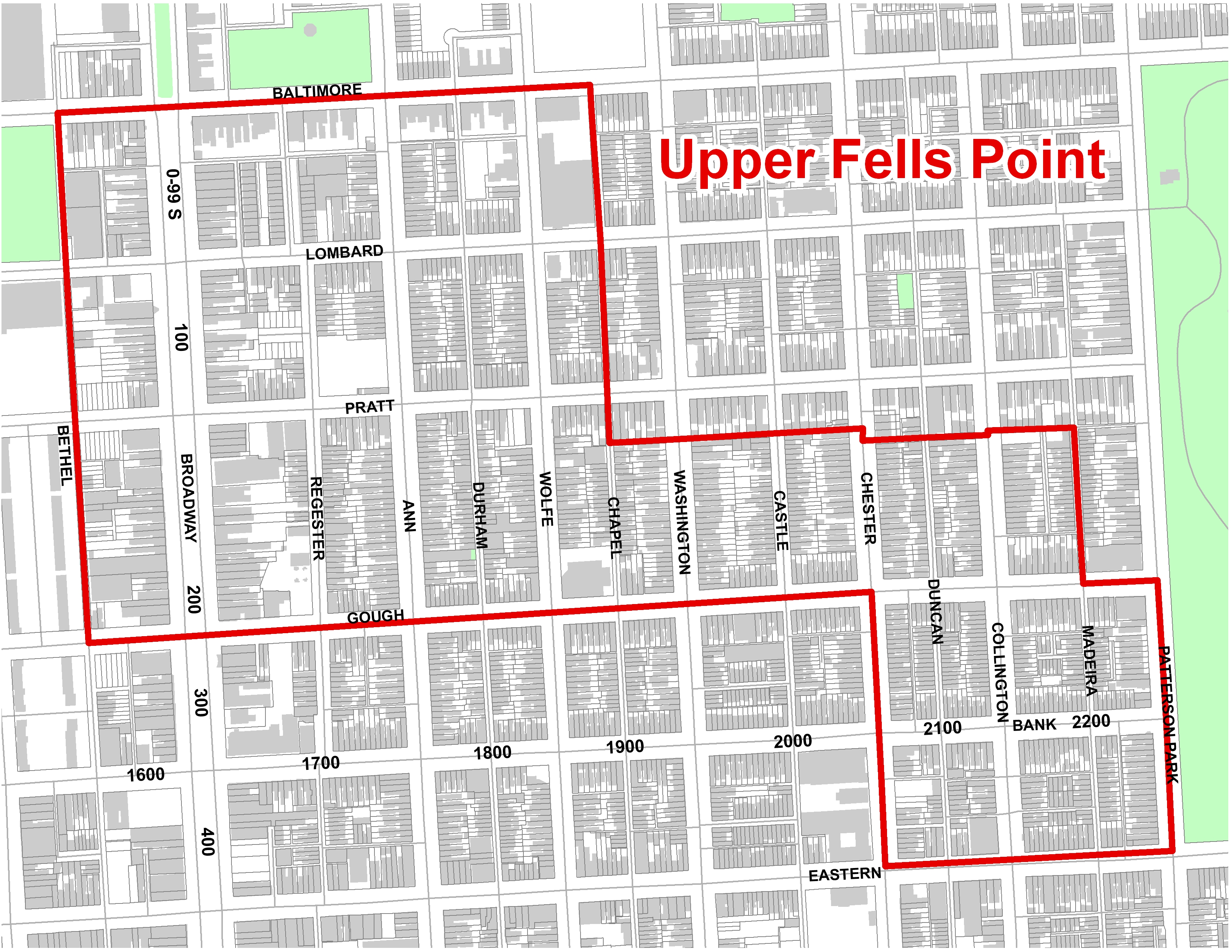Upper Fells Point
 Discription
Discription
The Upper Fells Point Historic District is a primarily residential neighborhood located north of the Fells Point Historic District and southeast of the Butchers Hill Historic District. Gough Street and Eastern Avenue serve as its southern boundaries, while East Baltimore and East Pratt Streets serve as the northern boundaries. The neighborhood is bounded to the west by houses on the west side of South Broadway, and bounded to the east by South Patterson Park and houses on the east sides of South Collington and South Wolfe Streets. The housing stock generally dates to the middle of the 19th century and is a mixture of upscale townhouses and more modest dwellings, which accommodated the variety of residents who made Upper Fells Point their home. Between 1845 and 1855, three-bay, three-story Greek Revival style townhouses were built along the neighborhoods main thoroughfares Broadway and Baltimore Street, while more modest two-bay, “two-story-and-attic” dwellings were constructed on the side streets and narrow alleys. The local religious architecture also reflected the influence of the Irish and German immigrants who lived and worked in the area. Four churches were constructed in Upper Fells Point between 1853 and 1859, including two German churches constructed in the Greek Revival and Lombardic styles, a Gothic style Episcopal Church, and a Lombardic style Baptist Church. Although the cultural and religious make-up of Upper Fells Point has diversified, the architectural significance of the neighborhood remains.
Statement Of Significance
The Upper Fells Point Historic District is significant for its fine architecture and its association with the Irish and German immigrant communities that lived in the neighborhood in the middle of the 19th century. The district contains both large, three-story, three-bay Greek Revival homes and more modest “two-story and attic” homes within the same block, with the larger houses facing the main roads and the smaller houses located on the side streets. This was a common trend in the development of Baltimore City neighborhoods, which made many neighborhoods socially and economically diverse. The middle of the 19th century saw an increased arrival of German and Irish immigrants on ships which docked at Fells Point. These immigrants gradually spread out through the Baltimore’s industrial areas to find housing and employment, and many settled in the Upper Fells Point neighborhood. The influence of these communities can be seen in the local housing and religious institutions. Many of the houses in the neighborhood were financed and constructed by Germans, and religious institutions such as the St. Michaels German Catholic Church and the Convent of Notre Dame, became important German cultural centers.
 Discription
Discription